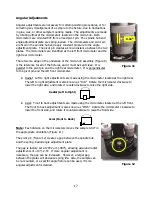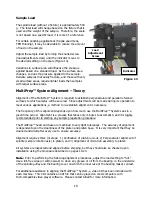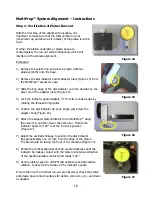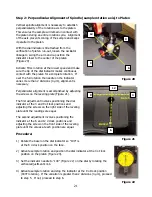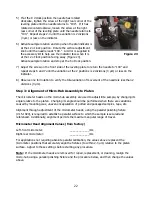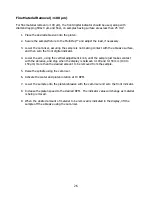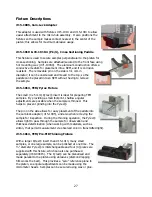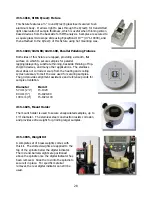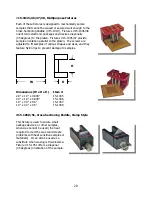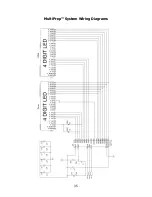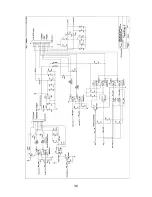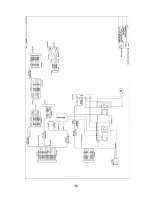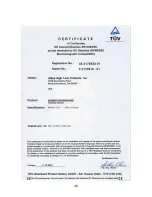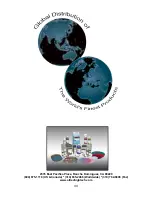
31
Maintenance
Platen Base Cleaning and Platen Cleaning/Storage
Vertical run-out of the platen must be kept at a minimum in order to optimize the precision of the
MultiPrep™ System. To prevent oxidation from water and polishing suspensions on the platen
base, it is very important to clean and dry this surface after each use of the machine. Warm,
soapy water or a mild solvent is recommended. Platens should be removed immediately after use
and kept dry (i.e. between two paper towels). If oxidation occurs or colloidal silica dries on the
rim of the platen base, it can be removed using diamond lapping film.
To clean it, run the platen base, without the platen, at 150
RPM, while running water directly onto the edge. Place a
piece of 30 µm diamond lapping film onto the exposed
rim, and apply pressure against the back of the film with a
finger, pressing the abrasive against the rim (Figure 29).
Hold it in place for at least 30 seconds, and then move the
film to expose another area and repeat the process. After
30 seconds, stop the rotation of the platen base and check
the vertical run-out of the platen as it rests on the platen
base. Repeat the cleaning if necessary to achieve minimal
run-out (less than 5 µm total). Keep in mind that debris
from grinding must be cleaned thoroughly, and lint from
any cloth used to dry the platen base must be wiped away
so it does not hinder contact between the platen and platen base.
Safe Cleaning Solutions and Methods
The entire exterior of the MultiPrep™ base is coated with an epoxy-based paint. Although it is
mainly resistant to solvents, acetone will remove the paint if it is exposed for too long. Mild, soapy
water or detergents (such as Formula 409®) are suitable for cleaning most areas of the machine.
On the MultiPrep™ head, most parts are either stainless steel or anodized aluminum, for corrosion
resistance. The micrometer heads and spindles are steel, which corrode when exposed to water
and not dried immediately. No oil, grease, or lubricants should be used on the MultiPrep™ head
vertical spindle, because it will collect dust and debris that will prematurely wear the surface and
degrade its performance.
Removing Colloidal Silica
Colloidal silica suspensions dry very quickly and are very difficult to clean once they have dried. A
solution of Micro Organic Soap (#148-10000) and warm water will successfully clean dried colloidal
silica from most surfaces. A soft, mild brush or scrubbing pad may need to be used.
Figure 29
Summary of Contents for MultiPrep System 15-2000-GI
Page 35: ...35 MultiPrep System Wiring Diagrams ...
Page 36: ...36 ...
Page 37: ...37 ...
Page 38: ...38 ...
Page 39: ...39 CE Certificates ...
Page 40: ...40 ...
Page 41: ...41 ...
Page 42: ...42 This page has been left blank intentionally ...
Page 43: ...43 This page has been left blank intentionally ...

